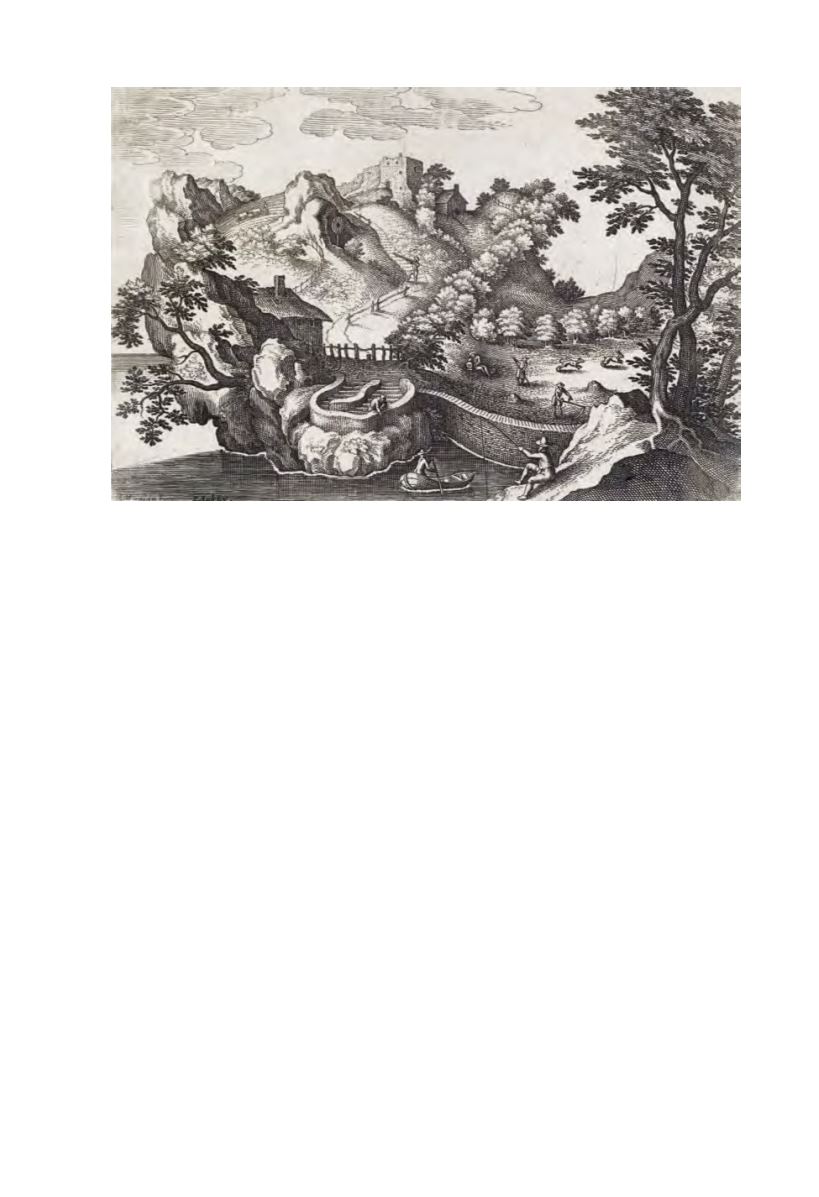

94
●
STEFANO DELLA BELLA
The Flight into Egypt
.
Etching, 1662. 207 mm; 8
1
/
4
inches (diameter). Second state (of 2). Shield (?) watermark.
Trimmed on the plate mark. A very good impression of this extremely scarce print.
We have found only 3 other impressions at auction in the past 30 years. DeVesme 13.
[1,000/1,500]
95
●
MATTHÄUS MERIAN
Anthropomorphic Landscape
.
Engraving, circa 1625. 110x168 mm; 4
3
/
8
x6
3
/
4
inches.Trimmed on or just inside the plate
mark. A very good impression of this extremely scarce landscape engraving, which viewed
closely takes on the appearance of a man’s head seen horizontally in profile.
Anthropomorphic landscapes, combining human features artfully disguised in landscape
views, such as the man’s head in profile looking upwards in this work, were popular during
the early 1600s. It has been suggested that these anthropomorphic landscapes began
appearing, not coincidentally, just as landscapes as subjects were becoming more popular
and accepted in western art, during the transition from landscapes with the obligitory
Biblical, historical or genre scenes to “pure” landscapes devoid of human presence. The
playfully creative side of these anthropomorphic landscapes also owes a great deal to the
paintings of Giuseppe Arcimboldo (1526 or 27-1593) the Italian artist and court portraitist
to the Holy Roman emperors Ferdinand I, Maximilian II and Rudolf II, whose images
of imaginative portrait heads made entirely of objects such as fruits, vegetables, flowers,
fish and books were wildly popular during the late 1500s.
Matthäus Merian, the Elder (1593-1650), was a Swiss-born engraver and publisher from
Basel who spent most of his career in Frankfurt, then one of the major publishing centers
of Europe. Hollstein 405.
[1,500/2,500]
95









